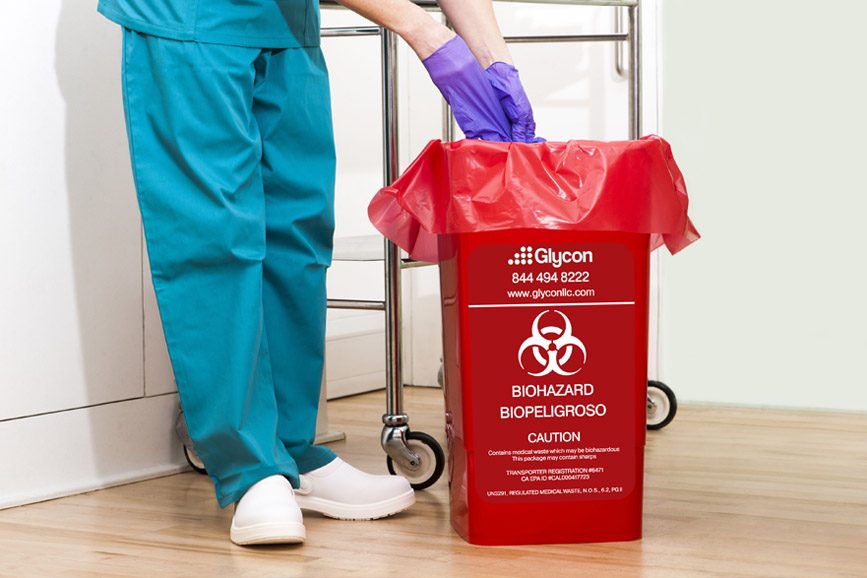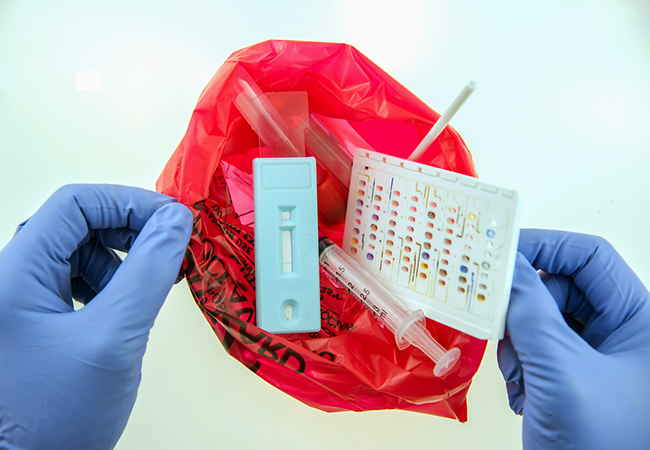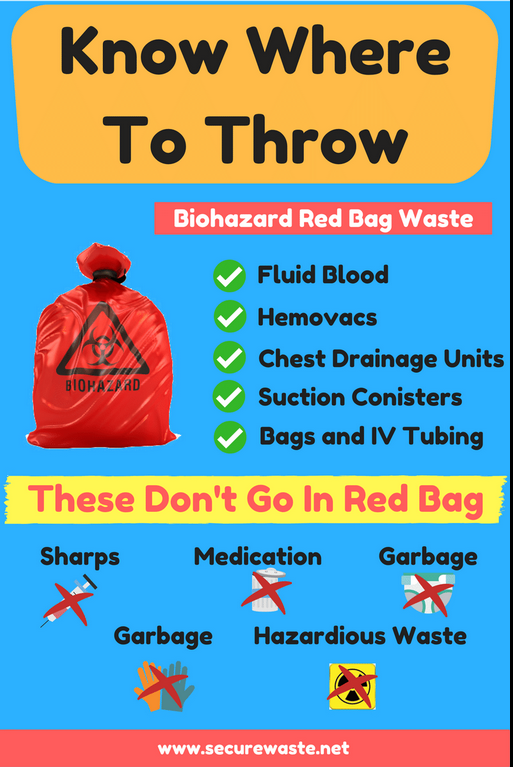Medical Waste Removal Mastery: Where Service Excellence Meets Wellness Criteria
Medical Waste Removal Mastery: Where Service Excellence Meets Wellness Criteria
Blog Article
Stay Ahead of Laws: Professional Guidance on Medical Waste Disposal
In a globe where the health care sector is continuously progressing, it is important for medical centers to stay in advance of guidelines when it comes to the appropriate disposal of medical waste. From recognizing the various categories of clinical waste to implementing the ideal collection and segregation approaches, this discussion will certainly give workable ideas and important understandings to aid centers stay ahead of laws in the ever-changing landscape of clinical waste disposal.
Recognizing Clinical Waste Categories
Understanding clinical waste categories is essential for correct disposal and administration in healthcare facilities. Clinical waste refers to any waste created by healthcare tasks that may present a threat to public health or the setting. It is essential to classify medical waste precisely to ensure its safe handling, disposal, transport, and treatment.
There are a number of classifications of clinical waste that healthcare centers require to be acquainted with. The most typical categories include contagious waste, pathological waste, sharps waste, pharmaceutical waste, and chemical waste. Each group has specific standards and regulations for its appropriate administration and disposal.
Transmittable waste includes materials polluted with blood or various other physical fluids, such as gloves, gowns, and laboratory societies. Pathological waste describes human cells, body organs, or body parts that require special delivery and disposal. Sharps waste consists of made use of needles, syringes, and other sharp objects that can cause injury and transmit infections. Drug waste consists of expired, unused, or contaminated medications that need cautious handling and disposal. Last but not least, chemical waste includes solvents, disinfectants, and other chemical compounds utilized in healthcare facilities.
Staying Up-To-Date With Regulatory Changes
Staying current with governing changes is vital for health care facilities to guarantee compliance and proper management of medical garbage disposal. medical waste removal. With laws frequently advancing, it is crucial for medical care centers to stay current to stay clear of charges, penalties, and prospective harm to the environment and public health
To remain in advance of governing adjustments, health care facilities must establish a system for monitoring and monitoring updates. This can be done by signing up for regulatory e-newsletters, attending workshops and meetings, and actively taking part in market organizations. Additionally, centers must designate a personnel or group in charge of remaining informed and distributing information to relevant stakeholders.
Regular interaction with regulative firms is likewise important. Healthcare centers need to develop relationships with neighborhood, state, and federal agencies to guarantee they recognize any kind of modifications in regulations that might affect their waste monitoring practices. This can be done with normal meetings, participation in public comment periods, and aggressive interaction with regulative agencies.
Furthermore, health care centers ought to take into consideration partnering with waste administration business that concentrate on clinical waste disposal (medical waste disposal services with WasteX). These business are usually skilled in the most recent regulations and can provide assistance and assistance to make sure compliance
Applying Correct Collection and Segregation Techniques
To successfully manage medical garbage disposal, healthcare facilities must develop proper collection and segregation approaches in conformity with governing standards. Applying these methods guarantees the risk-free handling and disposal of potentially dangerous materials, protects the environment, and reduces the risk of injuries and infections to health care employees and the public.
Proper collection and segregation methods include using designated containers and labeling systems. Health care centers should supply the original source clearly identified containers for different kinds of medical waste, such as sharps, infectious waste, pharmaceutical waste, and non-hazardous waste. These containers must be color-coded and plainly significant to stay clear of complication and promote simple recognition.
Additionally, healthcare centers should educate their staff on the proper treatments for gathering and segregating medical waste. This consists of enlightening them on the various kinds of waste, the suitable containers to make use of, and the significance of adhering to guidelines and regulations. Routine training sessions and refresher training courses ought to be performed to make sure that personnel remain updated on best methods.
Moreover, healthcare centers must establish a system for normal collection and disposal of medical waste. This might involve partnering with qualified waste management firms that focus on clinical waste disposal. These firms will make certain that the accumulated waste is transported and taken care of in compliance with governing requirements.
Selecting the Right Disposal Techniques

Incineration is one of the most reliable and usual techniques for disposing of certain sorts of clinical waste, such as pathological waste and sharps. It entails the regulated combustion of waste at high temperature levels, lowering it to ash. Incineration can release hazardous contaminants into the air and contribute to air pollution.

Chemical therapy involves the use of chemicals to counteract the waste and disinfect. Microwave treatment uses microwave energy to medical waste disposal services with WasteX heat and disinfect the waste.
Making Certain Compliance With Paperwork and Training
After very discover here carefully taking into consideration the appropriate disposal methods for clinical waste, healthcare facilities should make sure conformity with guidelines and lessen ecological influence by implementing effective paperwork and training procedures. This step is important in preserving a lasting and risk-free atmosphere for both health care workers and the general public.

Healthcare workers who manage clinical waste must obtain ideal training on waste segregation, managing, and disposal procedures. By offering comprehensive training, health care centers can empower their personnel to make enlightened choices and lessen the threat of incorrect waste disposal.
Verdict
Finally, staying in advance of laws in medical waste disposal is essential for medical care centers. medical waste removal service. Understanding the different classifications of clinical waste, remaining updated with regulative modifications, executing correct collection and partition techniques, selecting the appropriate disposal techniques, and making sure conformity with documentation and training are all essential actions. By following these standards, health care companies can properly handle and get rid of of clinical waste in a responsible and risk-free manner
From recognizing the various classifications of medical waste to applying the ideal collection and segregation techniques, this conversation will certainly supply useful understandings and workable tips to help centers stay ahead of guidelines in the ever-changing landscape of medical waste disposal. - medical waste disposal services with WasteX
The most typical classifications consist of contagious waste, pathological waste, sharps waste, pharmaceutical waste, and chemical waste. Healthcare centers must give clearly classified containers for various types of medical waste, such as sharps, infectious waste, pharmaceutical waste, and non-hazardous waste. Medical care facilities must establish an extensive system to tape and track all elements of medical waste disposal, including types of waste created, quantities, and disposal techniques utilized. Healthcare workers who handle clinical waste ought to obtain suitable training on waste partition, taking care of, and disposal treatments.
Report this page